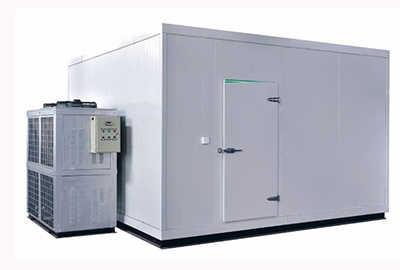
The Use of Cooling Rooms in the Food Industry
- Description details
-
The food industry requires strict control over the temperature of perishable goods throughout the production process to maintain quality, taste, and prevent spoilage. Cooling rooms, also referred to as cold storage, chillers, or refrigeration units, are a fundamental part of this temperature control system, playing an essential role in preserving the quality and extending the shelf life of a wide range of food products.
1. Purpose of Cooling Rooms
The primary purpose of a cooling room is to slow down the microbial growth on the food product that leads to spoilage. Microorganisms, including bacteria, yeast, and mold, thrive at certain temperatures, generally around room temperature. Cooling rooms reduce the temperature substantially below the optimum level for these organisms, slowing their growth significantly.
2. Types of Food Stored
A wide range of food products can benefit from storage in a cooling room. These include dairy products, meat, seafood, fruits, vegetables, and prepared foods. Each of these food types has a different optimal storage temperature and humidity level, which must be maintained precisely to prevent spoilage and preserve flavor, texture, and nutrient content.
3. Temperature and Humidity Control
In addition to temperature, the humidity level in the cooling room is also a crucial factor. Low humidity can cause foods to dry out, while high humidity can promote the growth of mold. A sophisticated cooling room system is capable of precisely regulating both temperature and humidity. Typically, cooling rooms maintain temperatures between -40°F and 68°F (-40°C and 20°C), and humidity levels from 85% to 99%.
4. Design Considerations
The design of a cooling room needs to factor in several elements, such as the type of food being stored, the volume of food, and the duration of storage. The cooling room should be well-insulated to maintain a consistent internal temperature and prevent energy loss. It also needs to be designed to allow for the efficient movement of goods in and out, ensuring that older stock is used first (First In, First Out - FIFO). Moreover, hygiene is a critical concern, so cooling rooms must be easy to clean and maintain.
5. Monitoring and Maintenance
Cooling rooms require constant monitoring and maintenance. Sensors and automatic control systems are often used to monitor temperature and humidity continuously. The cooling systems, insulation, door seals, and other components require regular checks and maintenance to ensure they are functioning correctly. Power backups are also essential to prevent spoilage in the event of a power failure.
In conclusion, cooling rooms are a vital component of the food industry, safeguarding food quality, extending shelf life, and ensuring regulatory compliance. Effective management of cooling rooms, including monitoring and maintenance, is crucial to prevent food waste and potential health risks to consumers.
- Specifications
-
Technical parameters
Cube meter
Net length x width x height
Temperature range
3
1.5 x 1 x 2m
-5~+5 oC
7
2 x 1.5 x 2.3m
-15~-20 oC
13
2.5 x 2.3 x 2.2m
-25~-40 oC
24
3.5 x 3 x 2.3m
42
4.5 x 4 x 2.3m
...
Any size will do!
